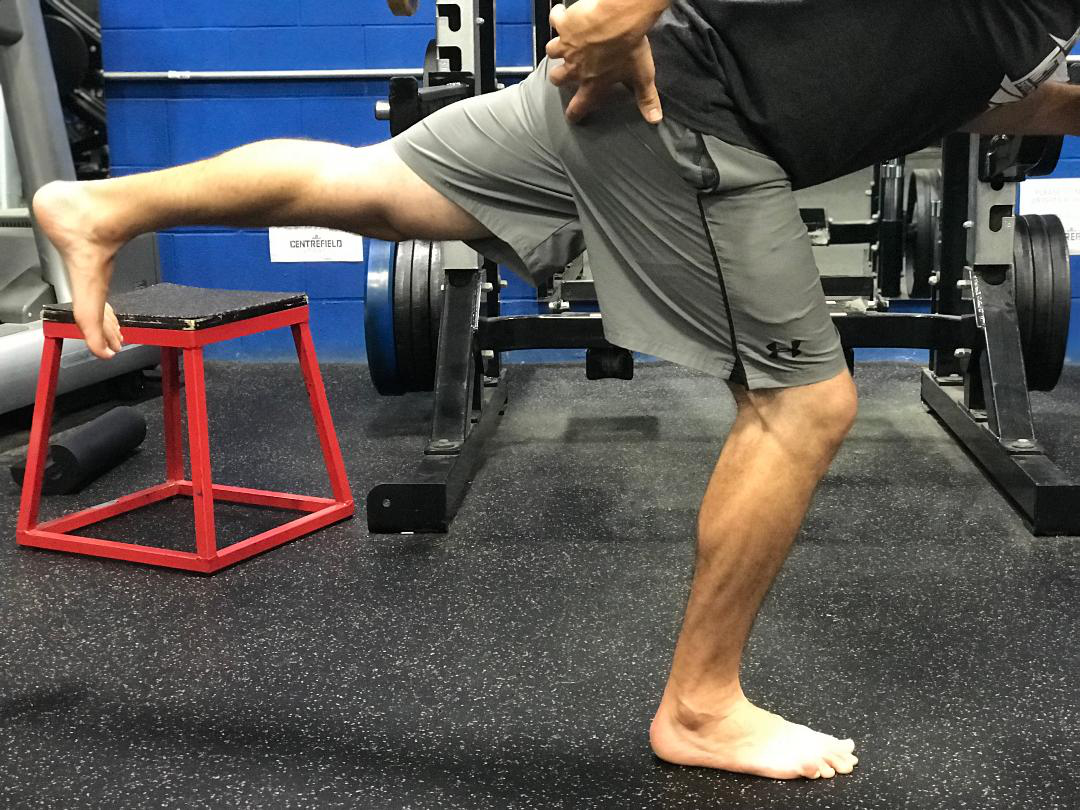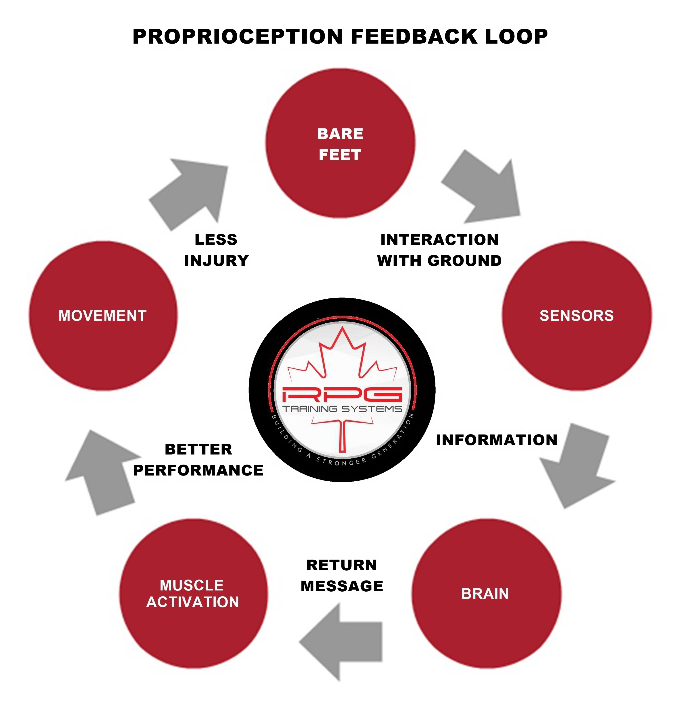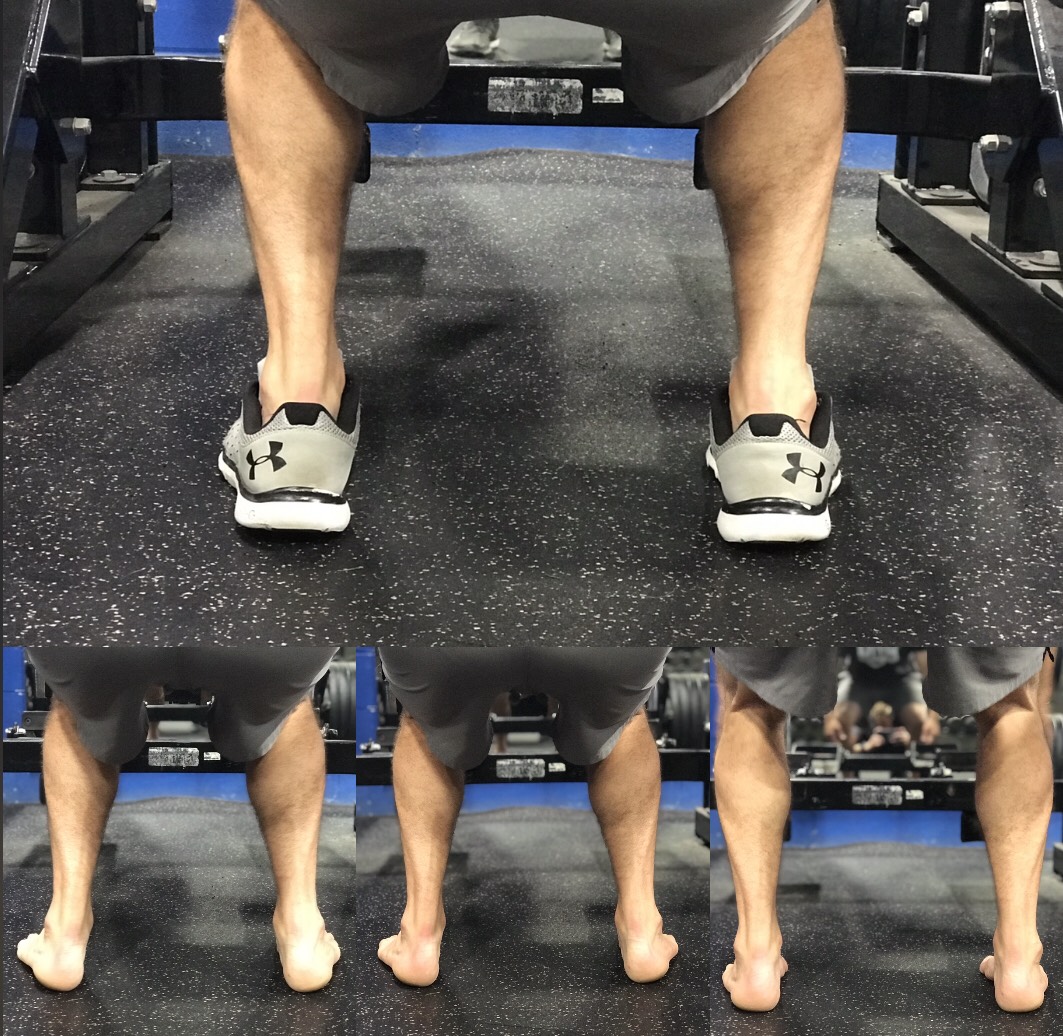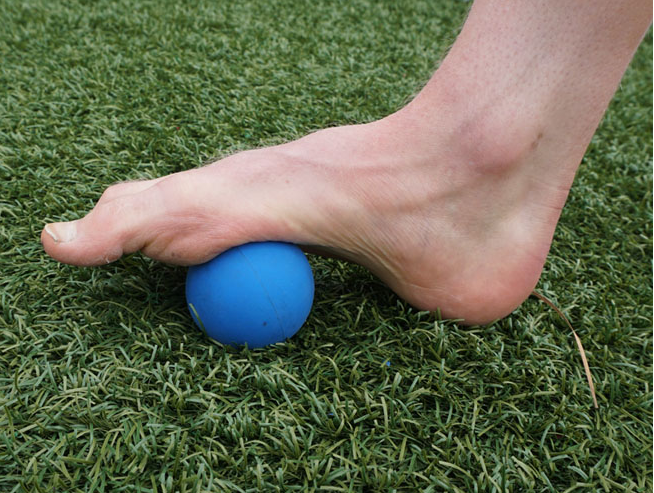Benefits of Barefoot Training
Improve performance, reduce injury and improve overall wellness with a stronger connection between mind and body.
Barefoot training isn’t new but seems to be gaining popularity due to its multitude of benefits of improved strength, mobility, stability and overall body awareness and performance. Like anything, there are pros and cons and should be safely implemented to ensure the good outweighs the bad. So why kick off the kicks and what’s the best way to start off on the right (bare) foot?
Increased Proprioception
Athletic shoes come in various forms with specific purposes each designed to protect the foot and ankle during activity, preventing injury by limiting range of motion. However, restricting your feet also prevents them from moving naturally. Socks and shoes interfere with the communication between the feet and the brain about how your body moves known as proprioception. Your feet have a lot of nerve endings and sensors that must communicate with the rest of your body. Training in bare feet increases proprioception; the sensory information from muscles, tendons, ligaments and joints sent to the brain telling it where our body parts are relative to each other and their speed and direction which determine balance and movement. A feedback loop is created when messages from the feet travel to the brain which returns information to adjust accordingly. If shoes aren’t interfering, feedback travels faster and more efficiently allowing your body to correct more quickly and prevent injury and improve performance.
Reduced Injuries with Strong, Flexible, Adaptive and Stable Foundation
Dr. Craig Hunt, a chiropodist from London, ON agrees “the primary benefit of barefoot training is increased proprioception” and confirms it develops intrinsic muscles. These are layers of small muscles that stabilize the arch and are important for maintaining the foot’s health. Dr. Hunt also states, “footwear tends to shorten the Achilles tendon.” Your feet must work harder to keep your body upright and balanced when they aren’t supported by shoes and gives athletes the opportunity to stretch and move their feet freely. The more information you can get from your feet, the more stable and balanced you will become. Training in bare feet helps build stronger, more flexible and adaptive feet improving foot and ankle stability creating the best foundation for preventing common injuries.
Whole Body Engagement, Connection and Improvement
When training barefoot, you feel more grounded. You have more control over your body. Imagine standing still with one foot off the ground. Everything starts to engage; your core, your glutes, your hips. You begin to focus. Now add arm movements then close your eyes. Each motion adds focus and creates a stronger connection between the entire body and mind. With all muscles activated and weight distributed appropriately, muscle force production improves. Now stronger, focused, engaged and connected, you will be better able to assess and improve weaknesses.
Approach Recovery Sensibly with Open Mind and Injury is Temporary
Coach Rory from RPG Training Systems attributes “better movement mechanics throughout all movement patterns” to barefoot training and the uninterrupted feedback loop allowing the brain to drive movement. When he was in the early stages of rehab for his “career ending” back injury, a chiropractor recommended stepping on and manipulating a spikey balance disc under bare feet before adjustments. Once Coach Rory had the ability to train and lift without massive amounts of pain, he began all training sessions in bare feet running on turf, working on balance discs and rolling out his feet before getting into any weights. These barefoot techniques were highly beneficial to his recovery and return to training. Now, when incorporating barefoot training with the athletes he trains, he hopes to inspire confidence that injury is temporary when you approach it in a sensible way and are open to non-traditional methods.
Common Sense Must Prevail
Like anything with benefit, there are risks. Dr. Hunt advises that “as long as it is done in a proper, safe environment and there are no underlying medical conditions or injuries there is definitely benefit” to barefoot training. He cautions athletes to be cognizant of the increased risk of bacterial or fungal infections and potential soft tissue injuries that are naturally present when in bare feet. Consider artificial turf, traditional courts and rubberized gym floors allowing a firm but forgiving surface beneath your feet. If you have mechanical issues in your foot already or suffer neuropathy, a complication from diabetes, alcoholism, etc., then shoes should be worn. Athletes should always identify the difference between discomfort or soreness and pain indicating potential injury.
Ready to Get Started?
A simple way to implement barefoot training into your strength and conditioning efforts is to incorporate it in your warmup. Grab a lacrosse ball or something similar and roll each foot with some light pressure for a minute or so while seated. This stimulates blood flow and activates the surface of your foot for more activity. Progress with various walking patterns then add mobility drills as you adjust to increased balance and stability. Further progressions include body weight movements and vary the positions of your feet. Hold of from running and plyometrics at the onset. Consider working with a professional trainer with the expertise and experience in barefoot training as you allow your entire kinetic chain to increase performance. Don’t rush. You’ve been wearing shoes most of your life. If done too quickly you increase the risk of the pain and injury you are trying to heal and prevent.
If added to your program properly, barefoot training is an effective method of improving the communication between your feet and brain allowing you to become stronger, more flexible, stable, balanced and adaptive which contributes to better performance and prevention of injury. Open your mind and unlace. See what awaits at that next level.
For information on training with RPG - click “TRAIN WITH US” and get started today!
By Jillian Holmes | 4 min read – Characters 6644
Resources:
Coach Rory Kosonic, CSCS, CPT, PTS, FMS, XPS. Owner/Director of Performance
Instagram | @performancepro
Dr. J. Craig Hunt, D. Ch. Hunt Footcare. London, ON
Find this article in the Sep/Oct 2019 edition of SportsXpress London





